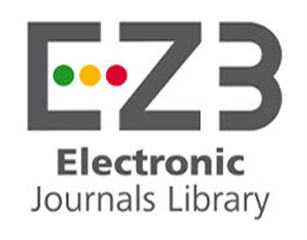RISK-MANAGEMENT AS AN INSTRUMENT OF THE PUBLIC REGULATION OF RISK ASSESSMENT IN CONSTRUCTION AND OPERATION OF BUILDINGS
DOI:
https://doi.org/10.32689/2617-2224-2018-15-5-195-209Keywords:
public regulation in the field of construction, risk management, risk assessment methods, investment and construction projectsAbstract
The urgency of the article lies in the need of improving the mechanisms of public regulation of economic relations in the country. To date, there are many internationally recognized quantitative, descriptive, and imitative approaches to the managing the risk of an investment project in the real sector. Their choice requires taking into account the peculiarities of public regulation of the construction industry on the basis of risk management. Methods of risk assessment are considered in the works of domestic and foreign scientists, in particular such as S. Bolotin [3], N. Blanas, C. Syraculis and H. Pandemmenou [19], V. Koshelev [8], O. Kruzhilko [9], T. Morozova [11], I. Ptukhina [12], A. Snirov [13], S. Shulzhenko [14], S. Hendrickson [16]. The peculiarities of public regulation of the activity of the construction industry actors and a comprehensive understanding of all the advantages and disadvantages of various methods of risk assessment in construction are still insufficiently worked out. The main task of the investor’s risk analysis is to construct the correct model (presentation) of the project, which is used to make a decision to finance the construction of a particular object. The basic groups of methods for analyzing the risk of financing a project by an investor can easily be determined by the key subject of consideration — this may be either a scheme of financial flows that arise from its financing, or a project itself as a socio-economic phenomenon. The use of risk management in the management of investment and construction projects serves as a modern tool for the public regulation and risk management of construction companies.
References
Азарова І. Б. Управління ризиками проектів у галузі житлового будів- ництва / І. Б. Азарова // Управлін- ня розвитком складних систем. — 2015. — Вип. 23 (1). — С. 11–20.
Басенко К. О. Поєднання прямого та непрямого державного впливу на зменшення інвестиційних ризиків у будівельному комплексі / К. О. Басенко // Агросвіт. — 2013. — № 12. — С. 55–60.
Болотин С. А. Конвергенция орга- низационно-технологического и ар- хитектурно-строительного проекти- рования ориентированного на энер- горесурсосбережение при строи- тельстве и эксплуатации зданий: монография / С. А. Болотин, А. Х. Да- дар. — СПб. : СПбГАСУ, 2010. — 143 с.
Власенко І. М. Теоретичні засади процесів державного управління ризиками у будівництві та експлу- атації споруд / І. М. Власенко // Інвестиції: практика та досвід. — 2018. — № 1. — С. 122–124.
Воскобійник О. П. Сучасний стан проблеми керування технічними ризиками (ризик-менеджмент) у будівництві / О. П. Воскобійник, О. В. Семко // Наук. пр.: Зб. Полтав. нац. тех. ун-ту ім. Ю. Кондратюка. — 2015. — Вип. 1. — С. 35–44. — Серія: Галузеве машинобудування, будів- ництво.
ИСО/МЭК 31010-2011 // Менедж- мент риска. Методы оценки риска. — М.: Стандартинформ, 2012. — С. 11– 13.
Калашников А. А. Организация, управление и планирование в стро- ительстве. Базовые принципы и основы организации инвестицион- но-строительных проектов / А. А. Ка- лашников, Н. И. Ватин. — СПб.: Изд- во Политех. ун-та, 2011. — 189 с.
Кошелев В. А. Анализ рисков в жи- лищном строительстве: методы и ин- струменты / В. А. Кошелев, Л. А. Со- сунова // Рос. предпринимательст- во. — 2014. — № 3 (249). — С. 34–41.
Кружилко О. Є. Застосування мо- дифікованого матричного методу оцінювання виробничого ризику на підприємствах будівельної галузі / О. Є. Кружилко, Я. Б. Сторож, О. В. Богданова, І. З. Лютак // Вісті Донец. гірничого ін-ту. — 2017. — № 1. — С. 107–112.
Мелко В. Л. Імплементація міжна- родного досвіду державного ре- гулювання страхування ризиків будівельної діяльності в Україні / В. Л. Мелко // Аспекти публіч. упр. — 2016. — № 37–38. — С. 40–49.
Морозова Т. Ф. Организация поточ- ной застройки кварталов объекта- ми соцкультбыта / Т. Ф. Морозова, Н. Н. Боковая, Ц. Ся // Строитель- ство уникальных зданий и сооруже- ний. — 2013. — № 1. — С. 36–46.
Птухина И. С. Развитие стоимост- ного инжиниринга в строительст- ве / И. С. Птухина, А. А. Лисков, И. А. Птухин // Строительство уни- кальных зданий и сооружений. — 2012. — № 5. — С. 17–20.
Шнырова А. И. Современные мето- дики оценки рисков в строительст- ве / А. И. Шнырова // Инновацион- ная наука. — 2015. — № 12-2.
Шульженко С. Н. Формирование комплексных строительных про- грамм в вероятностных условиях градостроительства / С. Н. Шуль- женко. — М. : Тульский полигра- фист, 2009. — 139 с.
A Guide to the Project Management Body of Knowledge Philadelphia (USA): Project Management Institute. — URL: http://www.sovnet.ru/pages/public/pm_risk.htm
Hendrickson C. Project Management for Construction Fundamental Concepts for Owners, Engineers, Architects and Builders. Carnegie Mellon University, Pittsburgh. — URL: http://pmbook.ce.cmu.edu/index.html
Gil N., Tether B. S. Project risk management and design flexibility: Analysing a case and conditions of complementarity // Research Policy. — 2011. — Vol. 40. — P. 415–428. 18. Industry Models of Risk Management and their Future. — URL: http://www.risksig.com/articles/index.html
Pandremmenou H., Sirakoulis K., Blanas N. Success factors in the management of investment projects: a case study in the region of thessaly // Procedia — Social and Behavioral Sciences. — 2013. — Vol. 74. — P. 438–447.
Yingbin Feng. Effect of safety investments on safety performance of building projects // Safety Science. — 2013. — Vol. 59. — P. 28–45.











